An artist's impression of the Gaia spacecraft mapping the Milky Way. Copyright ESA/ATG medialab; background: ESO/S. Brunier
For the last five years, the European Space Agency’s Gaia spacecraft has been creating the most detailed map of the Milky Way ever made.
Gaia launched on 19 December 2013 and now flies 1.5 million kilometres behind Earth as it orbits the Sun.
During its mission, Gaia has imaged over a billion stars multiple times to map the Milky Way.
Like most other large galaxies, the Milky Way it has grown into the spiral we know today by feasting upon its smaller brethren.
But these consumed galaxies are not entirely gone.
In 1994, astronomers found the remains of a dwarf galaxy that had been consumed – or accreted – by our own billions of years ago.
Since then, they’ve uncovered the bones of several other small galaxies, but seen no sign of the big galaxies that merged with the Milky Way.
Finding those traces requires a much closer look at the hundreds of billions of stars with which we share the Galaxy.
Enter Gaia.
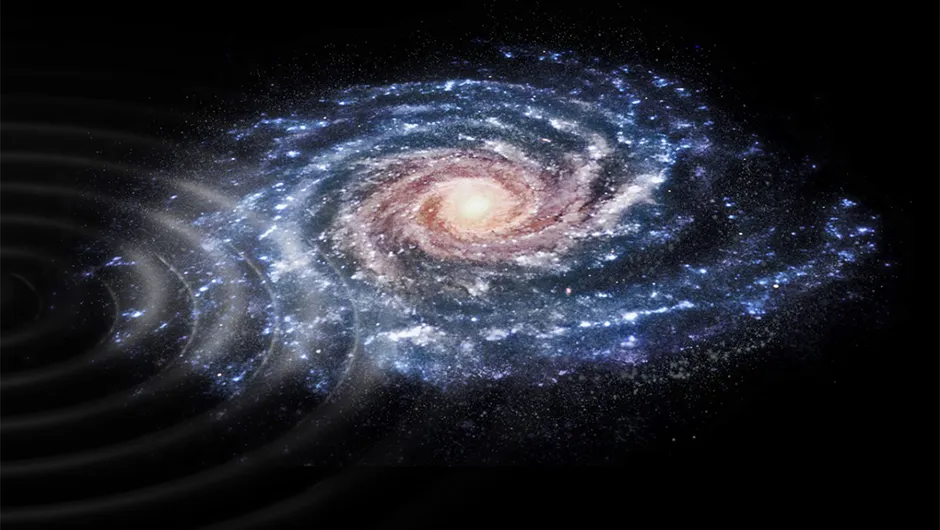
Turning back time
“Gaia is the first of its kind. It’s telling us what the Milky Way is like in three dimensions,” says Professor Gerry Gilmore from the University of Cambridge, one of the principal investigators of the Gaia mission.
Gaia is not just mapping star positions but velocities as well.
Astronomers can use these to track a star’s orbital path, then rewind their motions to work out where stars originally came from.
By doing this for stars across the Milky Way, it’s possible to reconstruct the history of our Galaxy’s growth.
In some cases, a star’s origin lies beyond our Galaxy.
However, to backtrack stellar motion accurately scientists have to find stars that have remained in a similar orbit for billions of years.
“In the plane of the Milky Way, the spiral arms move much faster, rotating around once every 100 million years, like a giant egg beater mixing everything up,” says Gilmore.
Unable to find what they needed in the disc, astronomers began looking at the halo of stars swarming around the outer regions of the Galaxy.
“In the halo, timescales are very long – stars take one billion years to go around and nothing much happens.
Stars high up out of the plane of the Galaxy retain the memory of where they came from in their motion,” says Gilmore.
Only a tiny fraction of stars Gaia observed are both in the halo and bright enough to take full velocity measurements, but even from this tiny sample, one set of stars immediately stood out.
“There’s a very large group of stars that were moving in the opposite direction to the other stars in our Galaxy,” says Amina Helmi from the Kapteyn Astronomical Institute in Groningen, whose team was one of those investigating these stars.
While most stars rotate clockwise, a group of around 33,000 were moving anticlockwise.
“This hinted to us that this is strange.
They could be a population that was accreted, because if stars were from the Milky Way itself you would expect, to some extent, that they would move like all the other stars,” says Helmi.
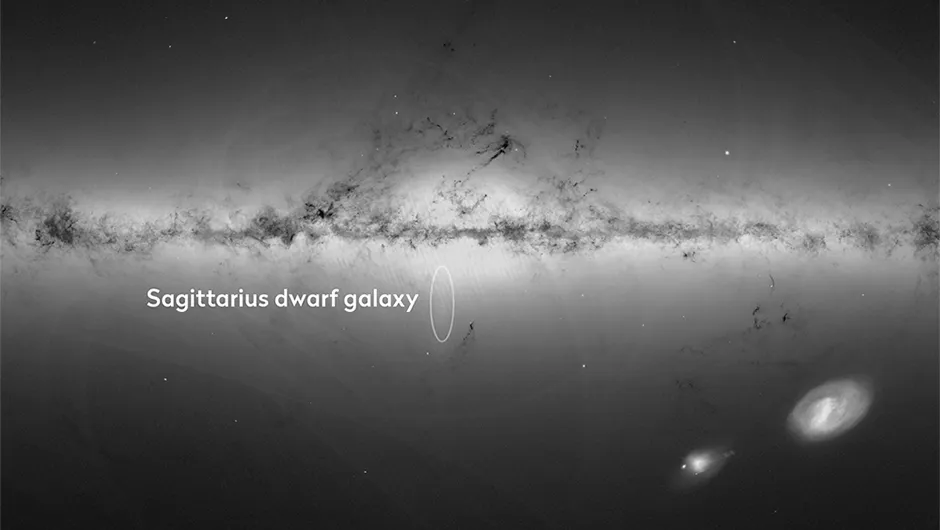
A galactic banquet
The real smoking gun came when the team cross-referenced these stars with the results from another survey, the APO Galactic Evolution Experiment (APOGEE), which looks at the chemical composition of stars.
The stellar chemistry suggested that these stars all came from the same galaxy, but this galaxy did not appear to have originally been the Milky Way.
“It was immediately clear these stars had to have been born elsewhere,” says Helmi.
From the remains of the merger, Helmi’s team were able to calculate that the colliding galaxy – now known as Gaia Enceladus – was a mammoth 600 million times the mass of the Sun, around 25 per cent of the mass of the Milky Way at that point.
This was no snack on a dwarf galaxy: this was a banquet on a galactic scale.
Just after the cosmic feast, the influx of gas would have created a burst of star formation.
Many of the 33,000 stars picked out by the Gaia data were born at this point – within the Milky Way, but from the gas of the colliding galaxy.
“The youngest stars are 10 billion years old,” says Helmi.
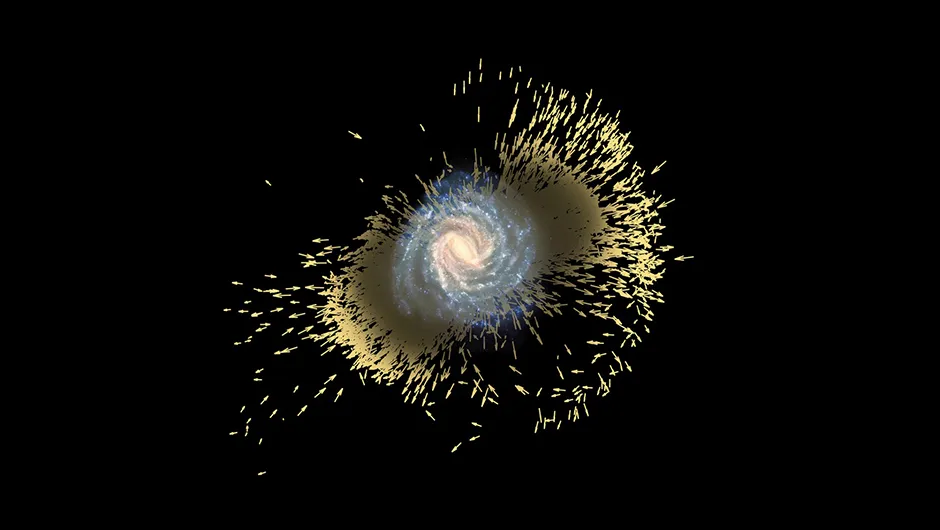
The Milky Way’s past feasts
But as the two bodies finished merging the interloper was torn apart, stopping any new stars from forming.
“That’s how we date the end of the merger, though it probably started 11 to 11.5 billion years ago. It takes a few billion years for a galaxy to be subsumed,” says Helmi.
“I think this was the last big merger that the Milky Way experienced.”
While this might have been the most recent and most obvious big merger our Galaxy has had, it’s almost certainly not the only one.
Finding traces of any previous mergers, however, will take an even more detailed examination of the Milky Way.
Currently, Gaia has full velocity measurements for just 7 million of its billion stars.
As the mission gathers and analyses more data, that number is growing, and by the end of Gaia’s survey astronomers hope to have velocity measurements for around 150 million stars.
Perhaps amongst this glut lies another galactic gate-crasher the Milky Way has swallowed up whole.
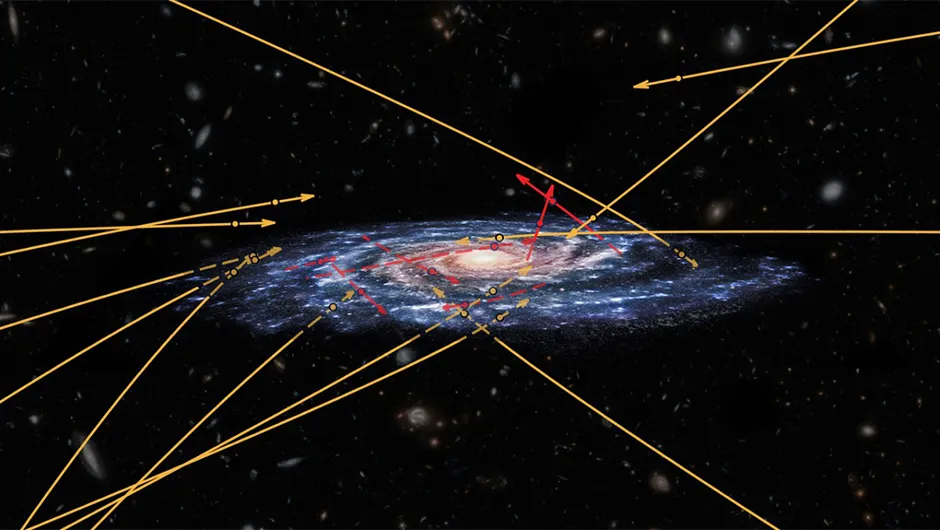
High-velocity invaders!
Not all the stars the Milky Way has gobbled up came in as part of a galaxy. Some arrived as lone invaders.
Astronomers have been sifting through the Gaia data looking for the fastest stars in the Galaxy.
These hypervelocity stars are thought to have been accelerated to enormous speeds by a close pass with the supermassive black hole at our Galaxy’s centre, or some other cataclysmic event.
They are travelling so fast they could potentially escape our Galaxy’s gravitational hold.
Astronomers were hoping to find one or two stars like this being thrown out of our Galaxy.
They found 20. Rather than escaping the Milky Way, many of them were rushing inward, having not been ejected from our Galaxy but another.
Now they are infiltrating the Milky Way.
The stars probably originated in one of the two Magellanic Clouds – small dwarf galaxies which lie close to the Milky Way.
“We would expect to find things like that coming out of the Magellanic Clouds,” says Gaia’s Gerry Gilmore.
“It’s also certain, on physics grounds, that there are a huge number coming from Andromeda as well, but we haven’t found them yet.”
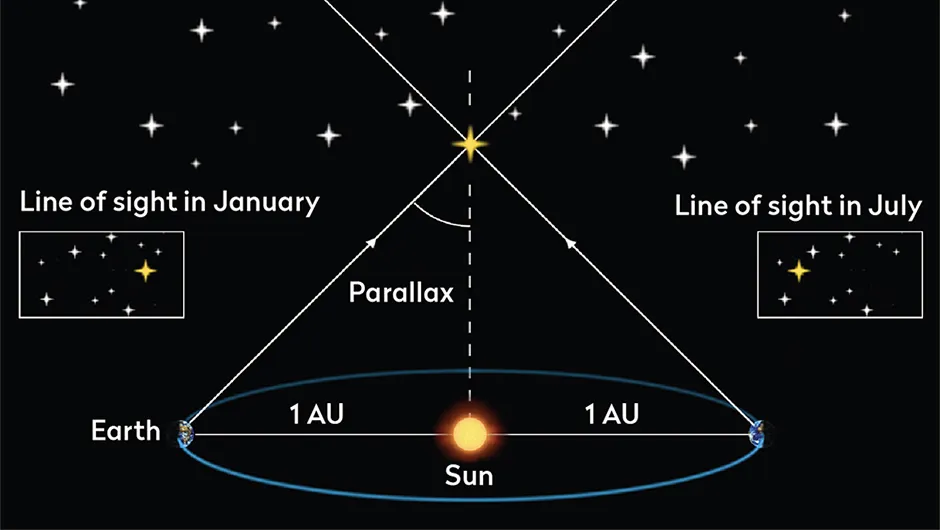
Mapping a Galaxy
While measuring a stellar position on the sky in two dimensions is relatively straightforward, tracking things along the line of sight to a star is a lot trickier.
To measure the distance to a star, Gaia uses a technique known as parallax.
The team compares two images of a star taken from opposite sides of the Solar System.
The difference in observing location causes the star’s apparent location to shift, and astronomers can use this to estimate the distance – the less a star moves, the further away it is.
In total, Gaia has observed each star around 70 times.
As well as ensuring precise parallax distances, these repeat observations mean researchers can track how the stars are moving across the sky and through the Galaxy.
For the brightest stars, it’s possible to measure how fast they move along our line of sight using what’s called redshift spectroscopy.
Within a star’s light are special signatures called spectral lines which are always created at the same wavelength.
The speed of a moving object can cause this wavelength to shift, and astronomers can measure this change to predict how quickly a star is moving away or towards us.
All these observations have produced a huge amount of data.
Though the Gaia mission is due to end in 2019, it will take years to fully process its trove of data and decades for astronomers to trawl through it.
Gaia’s story is far from over.
